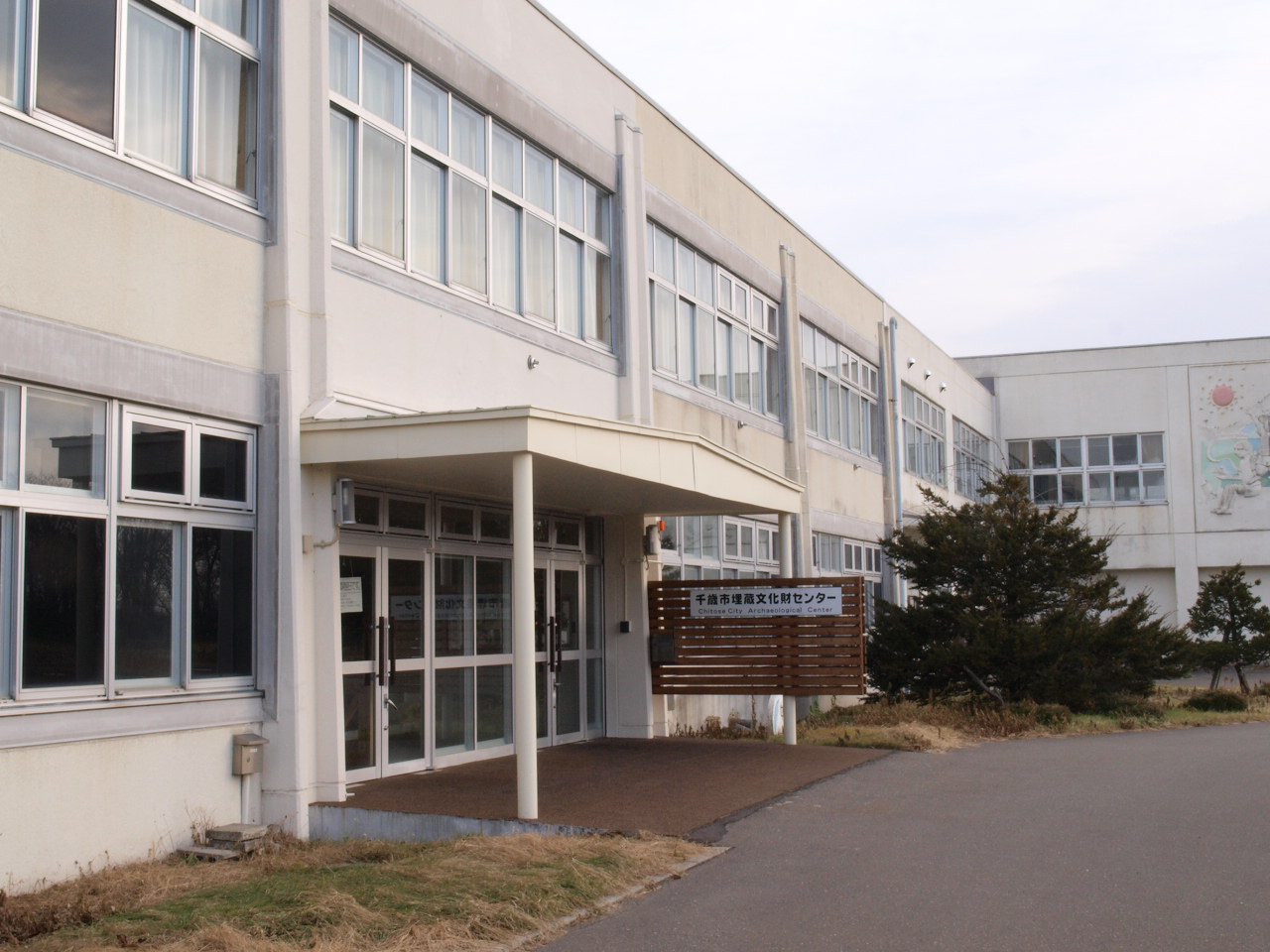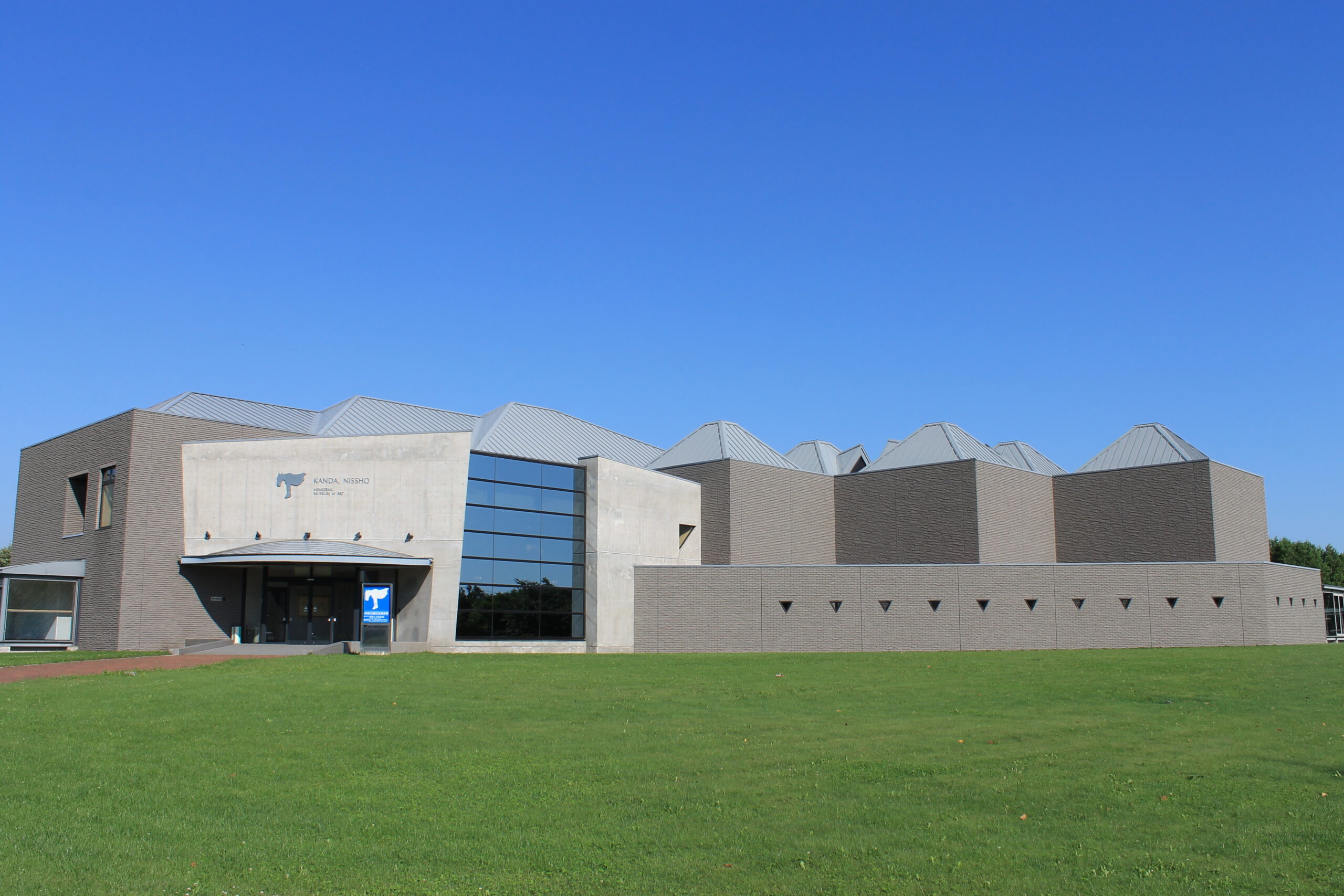This museum introduces the history and nature of Betsukai Town. Its ancillary facility, Kaga Family Archives, features documents handed down in the Kaga family that detail what the Nemuro region was like in the final days of shogunate rule. The Toyohara Branch Museum displays materials that provide insight into the history of dairy farming, a key industry of the town, including materials regarding the Konsen Pilot Farm (which was financially supported by the World Bank in the 1950s).
施設
Di-Maccio Art Museum, The Forest of Taiyo
The permanent exhibition, titled The World’s Biggest Oil Painting (nine meters in height by 27 meters in width, mirrored top and bottom as well as left and right), was painted by Gérard Di-Maccio, a French genius of fantasy art. The museum boasts Japan’s largest collection of works by the master glass artists René Lalique. The facility offers an hourly otherworldly show that decorates a gigantic oil painting with light and sound. This is the largest entertainment-oriented museum in the Hidaka area, where you can enjoy a whole day amidst natural splendor.
Asahikawa Museum of Sculpture in Honor of Teijiro Nakahara
This sculpture museum is dedicated to Teijiro Nakahara, a sculptor associated with Asahikawa who made an indelible mark on the history of modern sculpture in Japan. The museum provides an overview of the history of modern and present-day sculpture in Japan as it mainly exhibits his 12 works and also includes works by Auguste Rodin, Moriye Ogihara, and other sculptors who influenced Nakahara; works by winners of the Teijiro Nakahara Award, which was founded by the City of Asahikawa in 1970; and works by sculptors associated with Asahikawa and Hokkaido. In addition to the permanent exhibition, the museum holds special exhibitions, lectures, workshops, and other sculpture-related events, while collecting materials about sculptures and sculptors. In this way, the museum is a perfect fit for Asahikawa, a city of sculpture.
Ashoro Museum of Paleontology
This museum holds and exhibits fossils found in Ashoro of unique marine mammals dating from 25 million years ago, known as “the Ashoro fossil fauna.”
Visitors can learn a lot about the evolution of sea mammals, including sea cows, sea lions, seals, and penguin-like plotopterids, as well as Desmostylus, an enigmatic extinct order, and primitive whales. Also popular are various hands-on activities.
Katarube no Mori Art Museum
This facility was repurposed from the Ikaushi Elementary School building and is now used as a painting studio regularly visited by people with disabilities. In addition to the studio, the facility also has a pottery studio and a café, as well as three second-floor galleries, where paintings primarily by the studio members are displayed. Their pictures created in a free and unconstrained manner are not to be missed.
Chitose Buried Cultural Property Center
This facility’s permanent exhibition room showcases cultural properties excavated from archaeological sites in the city. They are exhibited in five separate sections under four themes, introducing visitors to the city’s culture and history from the Paleolithic period to the Ainu culture period in an easy-to-understand manner.
Kanda Nissho Memorial Museum of Art
This municipal museum houses about 135 paintings and sketches by Nissho Kanda (1937–1970), known as a farmer artist who died young. A campaign launched by local volunteers to award a posthumous honor to this Western-style painter who lived in Shikaoi evolved into a campaign to build a museum in his honor, resulting in the opening of the Kanda Nissho Memorial Museum in 1993. It was renamed the Kanda Nissho Memorial Museum of Art in 2006.
Hongo Shin Memorial Museum of Sculpture, Sapporo
This small museum in a quiet residential part of Sapporo’s Miyanomori district holds more than 1,800 sculptures, paintings, and other works by Shin Hongo (1905 – 1980), a leading sculptor from Sapporo who represents post-war Japanese art.
Kikonai Town Museum
Repurposed from an elementary school building, this museum features the history and culture of Kikonai Town and other areas of southern Hokkaido. More than 1,000 railway-related exhibits are displayed, in addition to materials related to the Japanese warship Kanrin Maru, which was built in the twilight years of shogunate rule. Also exhibited are objects unearthed from ancient archaeological sites, and tools and other items that contributed to the development of the town and its industry.
Hobetsu Museum
Most of the displays are fossils from the late Cretaceous period of the Mesozoic era, which are found in abundance in the Hobetsu area of Mukawa Town.
Exhibits include the restored skeleton of the Hobetsu-Araki-Ryu plesiosaur, whose discovery led to the museum’s opening, and the largest dinosaur skeleton unearthed in Japan, a fossil of Kamuysaurus japonicus, a plant-eating dinosaur nicknamed the Mukawa dinosaur after the town where it was discovered. The museum also holds and exhibits numerous ammonites.










